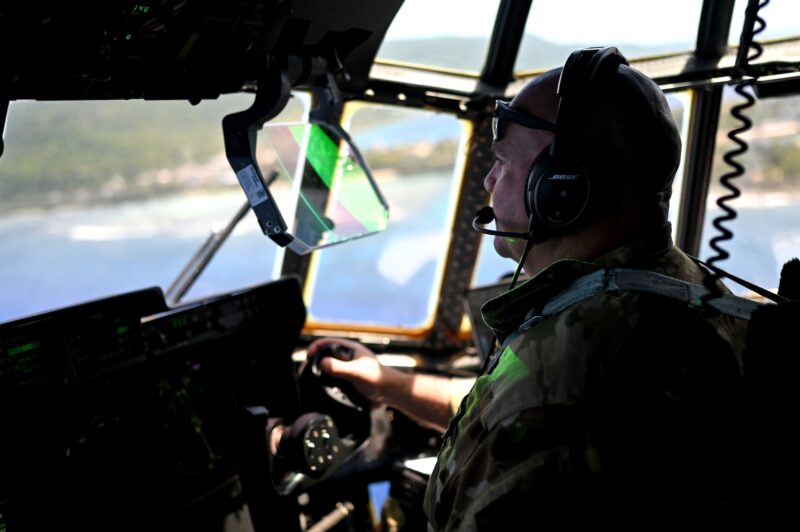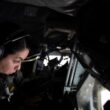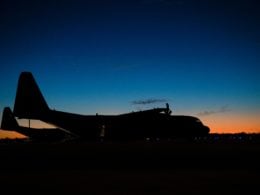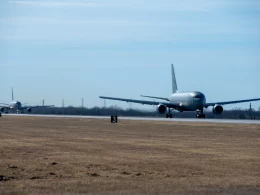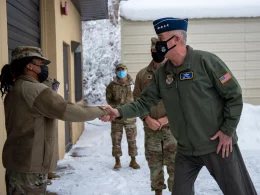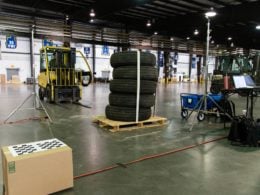KEESLER AIR FORCE BASE, Miss. —
About 60 403rd Wing Reserve Citizen Airmen supported the multinational U.S. Pacific Air Forces-sponsored exercise, Cope North 24, Feb. 4-23 at Anderson Air Force Base, Guam.
Airmen with the 815th Airlift Squadron, 403rd Operational Support Squadron, 403rd Maintenance Group, 803rd and 403rd Aircraft Maintenance Squadrons, 403rd Maintenance Squadron, and 403rd Logistics Readiness Squadron worked alongside U.S. Navy Sailors and Marines and military members from Australia, Canada, France, South Korea and Japan.
This year’s exercise focused on airborne integration for large-force employment and agile combat employment to enhance security and stability to maintain a free and open Indo-Pacific.
According to Capt. Zachary Underwood, 815th AS pilot, the Flying Jennies accomplished training objectives that unit members don’t typically have an opportunity to accomplish at home station. With their two C-130J Super Hercules, aircrew members were able to operate out of unprepared landing zones in an austere environment, move oversized cargo, perform combat off-loads, and transport aeromedical evacuation patients from an austere environment. They also got experience with flush planning and execution, he said, where in a simulated scenario remote and isolated airfields were attacked, and personnel were rapidly moved to Anderson AFB.
“Training was in-line with ACE concepts, as we were the airlift piece to the hub-and-spoke ideology, providing on-demand airlift to setup and shutdown spoke locations facilitating the Combat Air Forces mission,” he said.
Adversary threats to Air Force operations at forward bases can deny U.S. power projection, overwhelm traditional defense designs, impose prohibitive losses and lead to joint mission failure. ACE shifts operations from centralized physical infrastructures to a network of smaller, dispersed locations or cluster bases. Throughout the exercise, personnel and assets staged out of a hub location, Andersen AFB, then forward-deployed to airfields with various levels of infrastructure at Northwest Field Guam; Antonio B. Won Pat Guam International Airport; Commonwealth Northern Mariana Islands – Tinian, and Saipan.
In all, the 815th AS completed 70 sorties, flew 58.1 hours, and moved 160 pallets of cargo totaling 446.6 thousand pounds, 383 passengers, and 64 simulated AE patients, said Underwood.
A key component of ACE strategy is collaborating with multinational partners. The exercise showed what is possible when the allies and partners in the region come together for a common goal.
“Working with other countries was an incredible experience that we don’t often get to participate in outside of exercises, such as this, and deployments,” said Underwood. “It is always interesting to see how our interoperability translates across partner nation forces and to see how we quickly step into stride with one another to execute the mission, despite barriers such as having to work through interpreters.
“The exercise also provided us an opportunity to integrate with U.S. Pacific Air Forces and Total Force assets, to put ACE concepts into practice and determine what that looks like as we step into a 5th generation battlefield, particularly in our role as a C-130J airlift unit,” said Underwood.
The Flying Jennies success at the exercise couldn’t happen without support personnel, especially maintenance.
“Maintenance was an absolutely integral piece to executing our mission at Cope North 2024,” said Underwood.
Tech. Sgt. Michael Cameron, 803rd AMXS hydraulics technician, and his fellow maintainers kept the two C-130Js in operation.
“There were multiple instances where we thought we would have a tail go down for periods as long as three to five days, after sourcing parts, which could take a week or more,” said Underwood. “`Our innovative maintenance Airmen were able to provide solutions and put in the manpower hours to follow through with them. In two separate cases, this troubleshooting prevented an aircraft from being downed for a week or more, as was originally feared.”
Being in an environment where reservists don’t have the resources and staffing available such as at home station, can be a challenge. That challenge is what provided a learning experience for members such as Cameron.
“We worked as a team, supporting other specialists, jumping in as needed to get the job done,” he said. “There were some long days as the crews could fly three to five times a day, but we kept the aircraft mission ready. It was a huge learning experience. I appreciate everyone who helped me while there. When you work with a great team you can make anything happen.”




